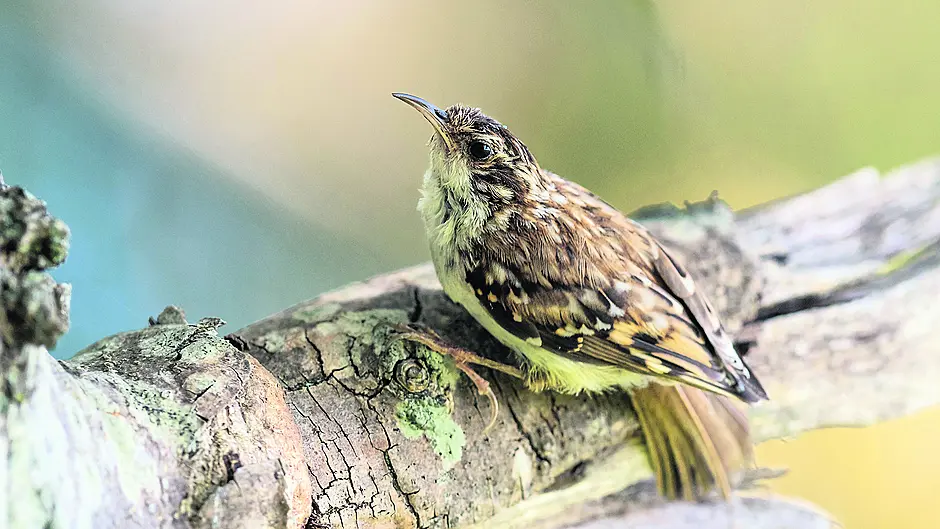ONLY one of my many new year resolutions lives on in my daily life but this new practice recently brought the joy of an unexpected observation.
One of my pledges for 2022 was to swop the constant swiping on my phone for some happy daydreaming during those everyday moments spent waiting around. Whilst sitting in my car in one such situation last week, I found myself admiring a majestic Monterey Cyprus tree on the N71 outside Skibbereen. And, lo and behold, a small movement on the tree bark caught my eye and there was a reclusive little ‘tree mouse’ feeding away on its bark.
The treecreeper is a paradox in that it’s a common bird yet still remains unfamiliar to most Irish people, being widely distributed but rarely seen. However, once seen this reclusive little bird is easily recognised again as its particular behaviour is unique in Irish birds.
Tree mouse
As its name suggests, the treecreeper lives and feeds mostly in trees. It creeps up the trunks and branches of both deciduous and evergreen trees to feed, probing crevices along the way for insects with its tweezer-sharp downwards-facing beak.
By swivelling its head with the beak in this position, it can reach deep into crannies to get to insects like earwigs. One fascinating study showed that treecreepers can fashion the length of their beaks to best suit the local requirements. So if you see one constantly rubbing its beak off the bark, it’s trying to wear it down to shorten its length rather than just cleaning it.
The treekeeper’s physique has adapted for its climbing lifestyle; the extra-strong shafts in its 12 tail-feathers are used as a prop – as in woodpeckers – enabling it to climb vertical tree trunks. However, this tail makes for an awkward hop on a heads-first decent, so the bird usually chooses to fly slowly down instead. Its claws are extraordinary; long and sharp, they help the bird to cling to the bark while an elongated fourth-toe gives it extra purchase on its steep climbs.
It’s a very small bird, about the size of its distant relative the wren. Weighing in at less that a 2 euro coin, its long tail and bill elongate it to give the appearance of a much more substantial bird.
The eyes of a treecreeper are large and protected by unusually prominent eyebrows for such a small slow-flying bird. The purpose and advantage of these eyebrows is not known but they give this otherwise benign-looking bird a somewhat grumpy expression.
The treecreeper’s plumage is brown above with various darker and paler streaks, and off-white underparts. This white can appear very bright in good light or in dry weather, but can appear murky brown or green having been pressed against a damp tree trunk in wet weather.
Its colours blend perfectly with its habitat. Once disturbed, it will freeze and press its camouflaged body into the bark making it extremely hard to see, especially as it tends to swivel around the tree trunk as it climbs. This predilection gave it the honour of being referred to collectively as a spiral of treecreepers.
This little fluffy-looking character moves upwards on the tree in a jerky, furtive way in a similar way to that of a mouse on the ground. This style of movement gave rise to its common name of ‘tree mouse’ in parts of the UK. The name treecreeper only came into general use in the nineteenth century and replaced the older terms ‘creeper’ or ‘common creeper’. Its Irish name, snag, also owes its origins to words like creeping and crawling.
Treecreepers build their nests behind loose bark and in tree crevices, using pieces of grass and small roots, lining the interior with feathers, wool and bits of bark. The peak period for egg laying is late April and early May. Not many young are lost to predators from these well-protected nests. This might explain why, although they only raise a single brood of 5 or 6, they can maintain their population whereas tits needs clutches of twice that number to survive.
Piotr’s wonderful accompanying photograph really reveals the understated beauty of this shy bird. I feel honoured to have seen one yet again and so I’m resolutely daydreaming for the rest of 2022 in the hopes of more unexpected sightings.










